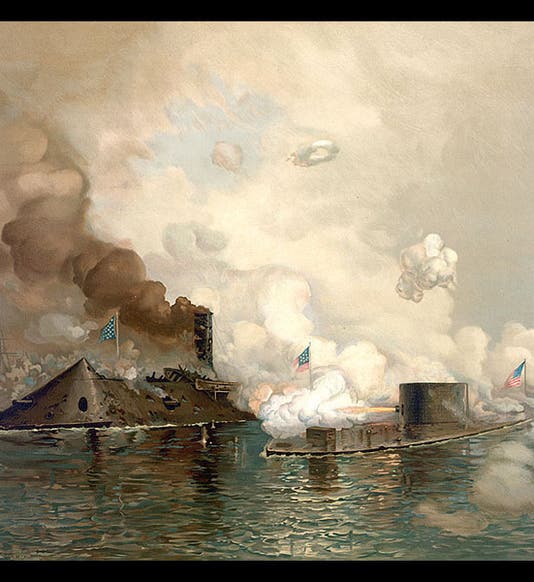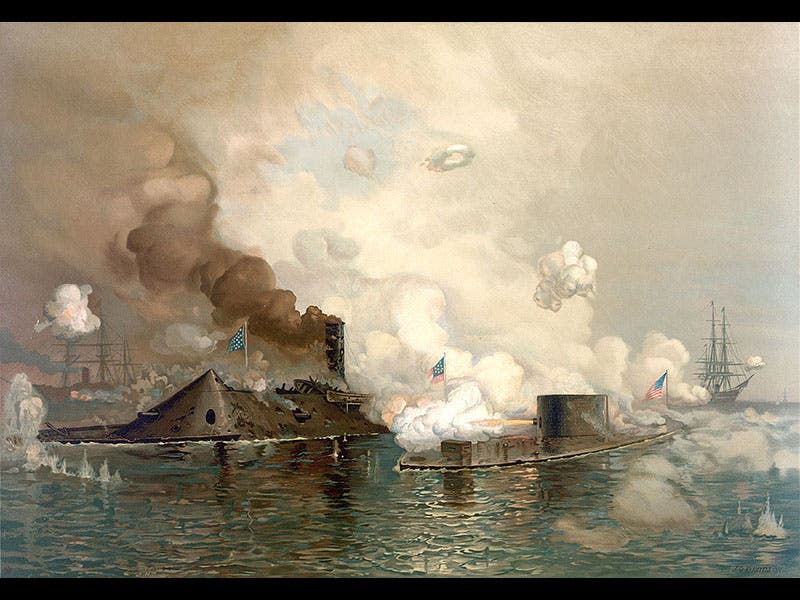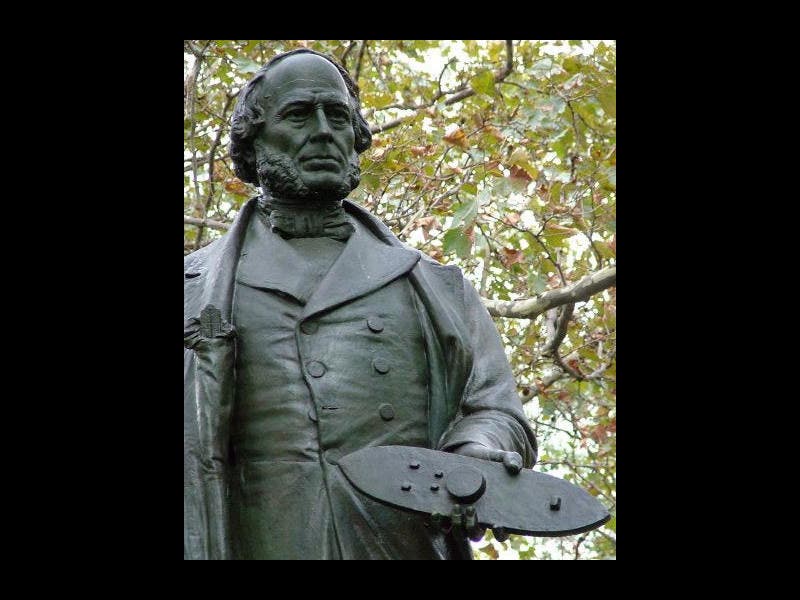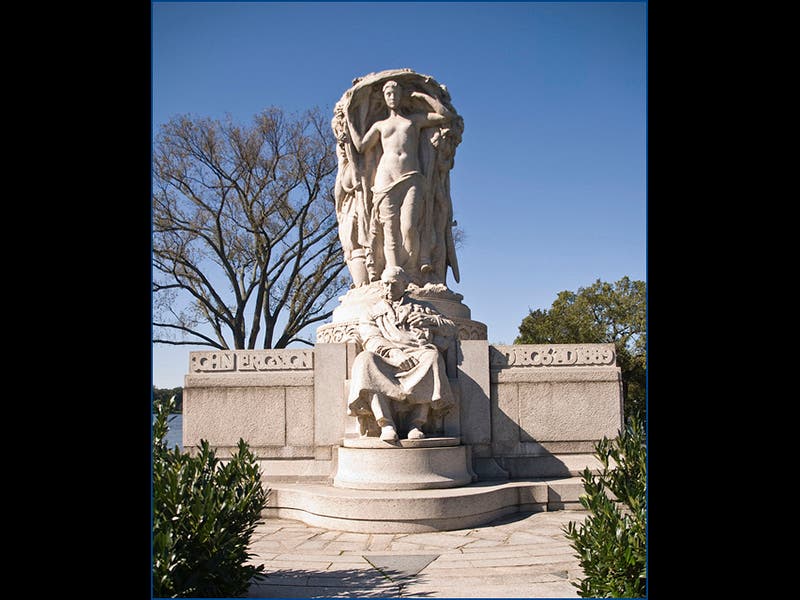Scientist of the Day - John Ericsson
On Mar. 9, 1862, the ironclad ship USS Monitor showed up at Hampton Roads, Virginia. The previous day, the ironclad confederate ship Virginia (formerly the Merrimac before acquiring her iron epidermis) had destroyed several U.S. Navy ships, but when the Monitor joined the fray the next day, the Virginia had a worthy challenger. The Battle of Hampton Roads, as it is called, was essentially a stalemate, since neither ship could sink the other, but notice was served by both sides that the nature of naval combat had changed (see first image above). Both navies immediately quit building wooden-sheathed warships in favor of ironclads; the wooden gunship was suddenly a thing of the past.
The USS Monitor was designed and built by John Ericsson (1803-1889), a Swedish inventor who moved to England, invented the screw propeller, then came to the U.S. and built the first screw-driven steam warship for the U.S. Navy. The Monitor, a 180-foot, 1000-ton iron behemoth, was designed as an ironclad from the beginning, unlike the Virginia, which was simply a converted wooden warship. The Monitor was built in just 100 days, and although it sank in a storm not long after the Battle of Hampton Roads, it spawned dozens of look-alike progeny.
There is a bronze statue of Ericsson in Battery Park in New York City (second image). Ericsson holds a model of the Monitor, which looks quite small, so we need to remind ourselves that this ship was huge and heavy and held a crew of 60. There is another monument in West Potomac Park in Washington, D.C (third image). It features a marble statue of Ericsson, protected by three standing allegorical figures representing Labor, Adventure, and Vision—the latter is the one looming over Ericsson.
There is a reduced-size replica of the Monitor on display at the Mariners’ Museum in Newport News (fourth image).
Dr. William B. Ashworth, Jr., Consultant for the History of Science, Linda Hall Library and Associate Professor, Department of History, University of Missouri-Kansas City. Comments or corrections are welcome; please direct to ashworthw@umkc.edu.








![Columbine, hand-colored woodcut, [Gart der Gesundheit], printed by Peter Schoeffer, Mainz, chap. 162, 1485 (Linda Hall Library)](https://assets-us-01.kc-usercontent.com:443/9dd25524-761a-000d-d79f-86a5086d4774/3829b99e-a030-4a36-8bdd-27295454c30c/gart1.jpg?w=210&h=210&auto=format&fit=crop)

